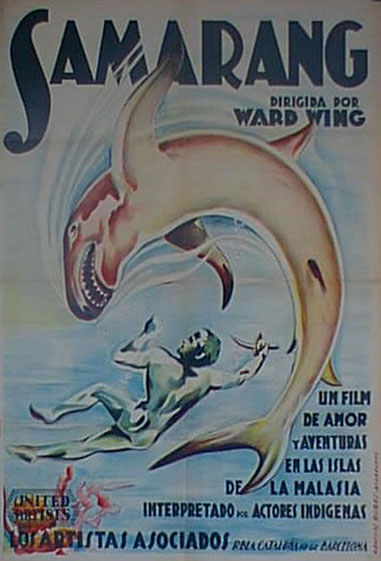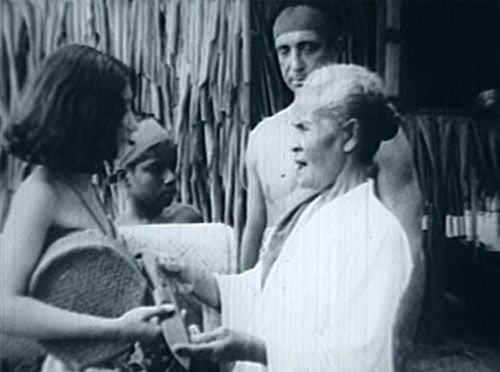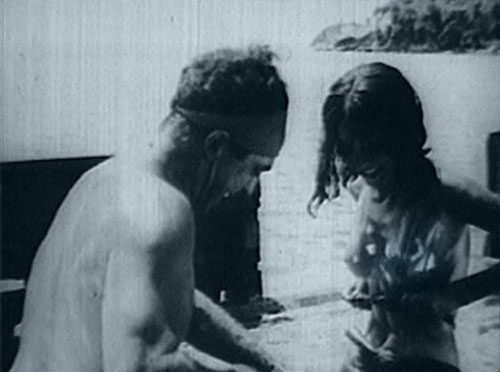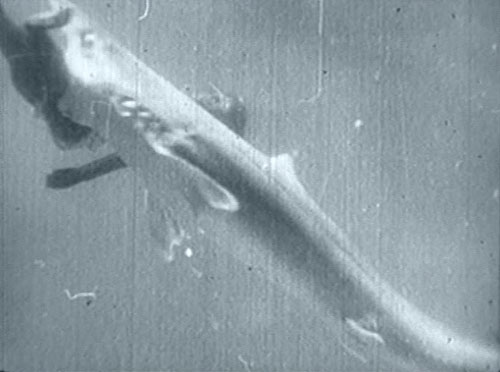 My hunt for shark films has sent me in some odd directions. Putting a call out on our Facebook page for sharksploitation I may not have seen, I received some fantastic suggestions, including the subject of this article, Samarang. I’ve been yet to find an older sharksploitation entry than Samarang. It’s a film that sits in almost total obscurity, yet, surprisingly, it’s a rather good watch.
My hunt for shark films has sent me in some odd directions. Putting a call out on our Facebook page for sharksploitation I may not have seen, I received some fantastic suggestions, including the subject of this article, Samarang. I’ve been yet to find an older sharksploitation entry than Samarang. It’s a film that sits in almost total obscurity, yet, surprisingly, it’s a rather good watch.
SAMARANG
aka: Shark Woman (1940 retitling)
USA, 1933, Ward Wing

Source: Benito Movie Poster

Emphasis must really be placed on the “pseudo” in pseudo-documentary. There’s little truth in Samarang with its very structured, sometimes hammy story, and obviously foreign leads set against a backdrop of local extras. Ahmang has a younger brother who plays an important role in the film. Seeing the very white Cockle acting alongside Ko-Hal, the young local actor who portrays is brother, is indeed awkward (and obviously very obnoxious by today’s standards), as are his scenes with his elderly mother (Mamounah).

To further remove any sense of realism, Samarang is set in Indonesia rather than Singapore — I’m not entirely sure why. The reason why this film labels itself a documentary is, however, clear: to get away with nudity. Gratuitous nudity is generally not associated with silent films, but Samarang dishes it out rampantly albeit inconsistently. The film’s female star, Theresa Seth, spends early sections of the film desperately covering her body while showering. Then, out of nowhere halfway through the film, she loses her top, which stays lost for the remainder of the film. Perhaps the inclusion of boobs was a decision made part way through production?

Samarang not only offers gratuitous boobs, there’s also some surprisingly decent action and drama. The scenes of pearl diving are captured with a raw energy and rich underwater cinematography. A sequence where Ahmang and Sai-Yu interact with the exotic wildlife while avoiding marauding cannibals is somewhat messily thrown together but still extremely entertaining.



For a film with “shark” in its title (or at least its retitling), there’s not much shark action, but the handful of shark scenes are certainly worthwhile. The film’s starring shark fights an octopus, which I found a unique and bizarre sight. The shark also gobbles up a little kid. The shark used is tiny, but they replace the child actor with a doll to make its size appear bigger. I appreciate that sort of dedication even if it’s obviously been shot in a fish tank.

Grim ending aside, Samarang is very hammy, and yes, the mixture of local and foreign actors is a bit embarrassing. It’s inconsistent with long stretches of nothingness. But for all its faults, Samarang is a fun watch and a fascinating slice of history. With a lack of synched sound so jarring to a modern audience, it’s often difficult to get in the right mindset to watch a silent film, but Samarang is so fluffy and pulpy that it’s impossible not to enjoy.
There’s also a great shot of emotionless nose-picking, which makes this an instant must-see.

Samarang, under the title of Shark Woman, is available from purveyors of crackly public domain prints, Alpha Home Entertainment. It’s a DVD-R rather than a DVD (if that’s a problem for you). The print is surprisingly good. It looks to be directly from a film print rather than a video source, but I could be wrong.





